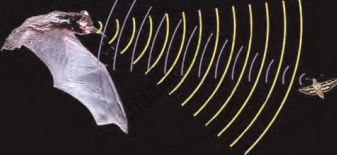The Italian scientist Spallanzani discovered that bats rely on their ears, not their eyes, to navigate in the dark. Through experiments, he found that covering their ears caused bats to collide with obstacles, even with their eyes uncovered. Bats use ultrasonic sound waves that reflect off obstacles. By receiving these reflected sounds with their ears, they can locate objects and estimate distances, enabling them to fly safely even in complete darkness.


